How To Buy a Map
(Title stolen from Umberto Eco’s “How to Travel with a Salmon”)
Step 1: Notice that my map is outdated
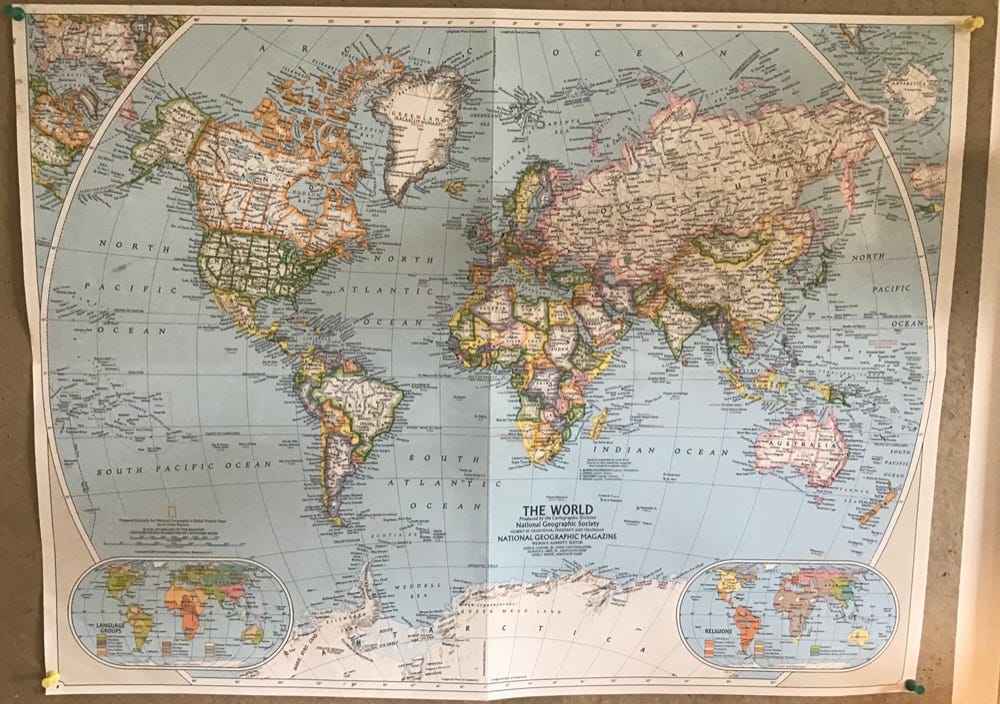
This map is older than I am:

Step 2: Do some research
tl;dr: A Mercator projection is good for ocean navigation:

But it distorts areas: Greenland looks as large as Africa. So an alternative is the equal-area Peters projection:
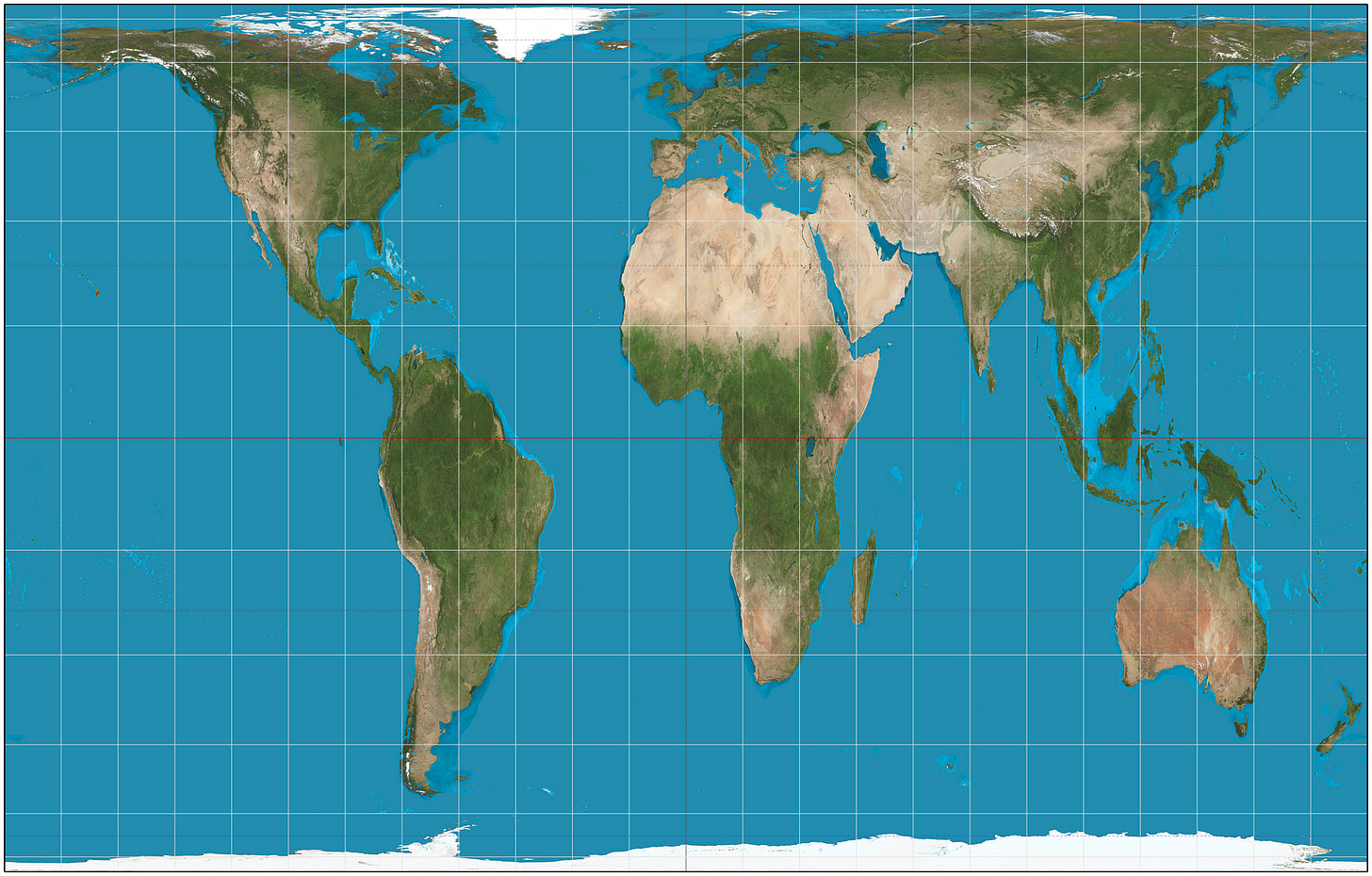
Step 3: Discover a controversy
Cartographers hate the Peters projection.
Robinson (in The American Cartographer) informs us that:
On the “Peters projection” the landmasses are somewhat reminiscent of wet, ragged, long, winter underwear hung out to dry on the Arctic Circle.
And Peters hated cartographers right back:1
The cartographic profession is, by its retention of old precepts based on the Eurocentric global concept, incapable of developing this egalitarian world map which alone can demonstrate the parity of all peoples on the earth.
To be clear, both sides think that an equal-area map is better than Mercator’s projection (if you’re not a sailor). But Peters wanted everyone to use his equal-area projection, (incorrectly) claiming that it’s the only alternative to Mercator.
Cartographers retaliated by discovering a problem in Peters’s map:
Maling called his article “Peters’ Wunderwerk,” but he thought it was no ’wonderwork’ that Peters had produced. After obtaining a copy of an early Peters brochure, Maling was able to take measurements from a published example of the projection, and…found “large” and “regular” errors. There was therefore only one conclusion: “Peters’ Projection is not equal area” (p. 156).
(The errors were later corrected.)
OK, but Peters has been dead for almost 20 years. Have the arguments died down? Uh, not really.
In 2017, Boston’s public schools decided “to decolonize the curriculum in our public schools”. So they adopted the Peters projection. Šavrič, Patterson, and Jenny (in the International Journal of Geographical Information Science) are not amused:
Boston Public Schools announced the switch to the Gall-Peters projection for all classroom maps showing the entire world (Boston Public Schools 2017). The media reporting by major national and international news outlets, such as The Guardian (Walters 2017), The Huffington Post (Workneh 2017), National Public Radio (Dwyer 2017) or Newsweek (Williams 2017), largely focused on these all-too-familiar themes: the Mercator projection is bad for world maps because it grossly enlarges the high-latitude regions at the expense of the tropics (true); nowadays, the Mercator projection is still the standard for making world maps (false); and only maps using the equal-area Gall-Peters projection can right this wrong (false)
So Šavrič et al. designed another equal-area projection and marketed it as the Equal Earth projection:

Other equal-area maps include the Lambert azimuthal equal-area projection,

the (spiky) HEALPix,
the (somewhat lumpy) Strebe projection,

and the (very lumpy) Goode homolosine projection:
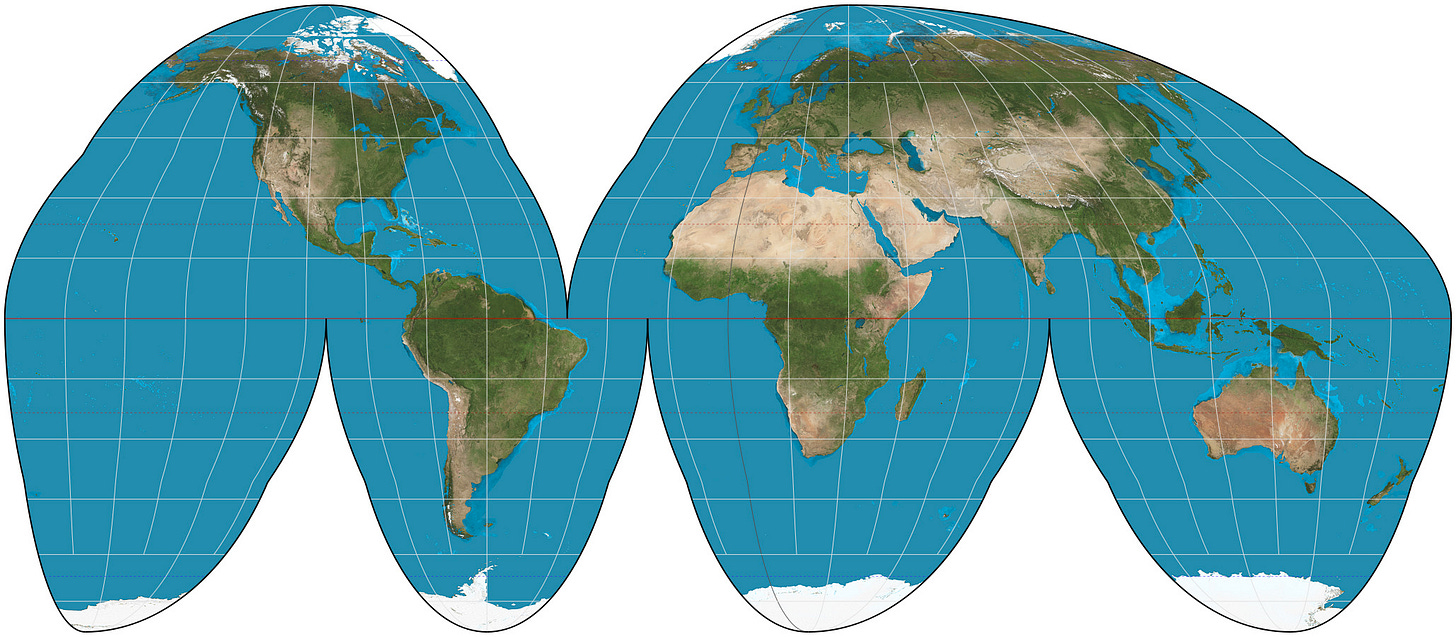
Step 4: Become slightly jealous of the Flat Earthers for not needing to worry about projections

The bottom right corner reads:
Send 25 Cents to the Author, Prof Orlando Ferguson, for a book explaining this Square and Stationary Earth. It Knocks the Globe Theory Clean Out. It will Teach You How to Foretell Eclipses. It is Worth Its Weight in Gold.
Step 5: Realise that there are too many projections
Do you want an equal-area map shaped like a triangle? Here’s the Collignon projection:

Like a heart? The Werner projection:

Problem: The Werner projection screws over Australia.
Solution: Don’t include Australia:
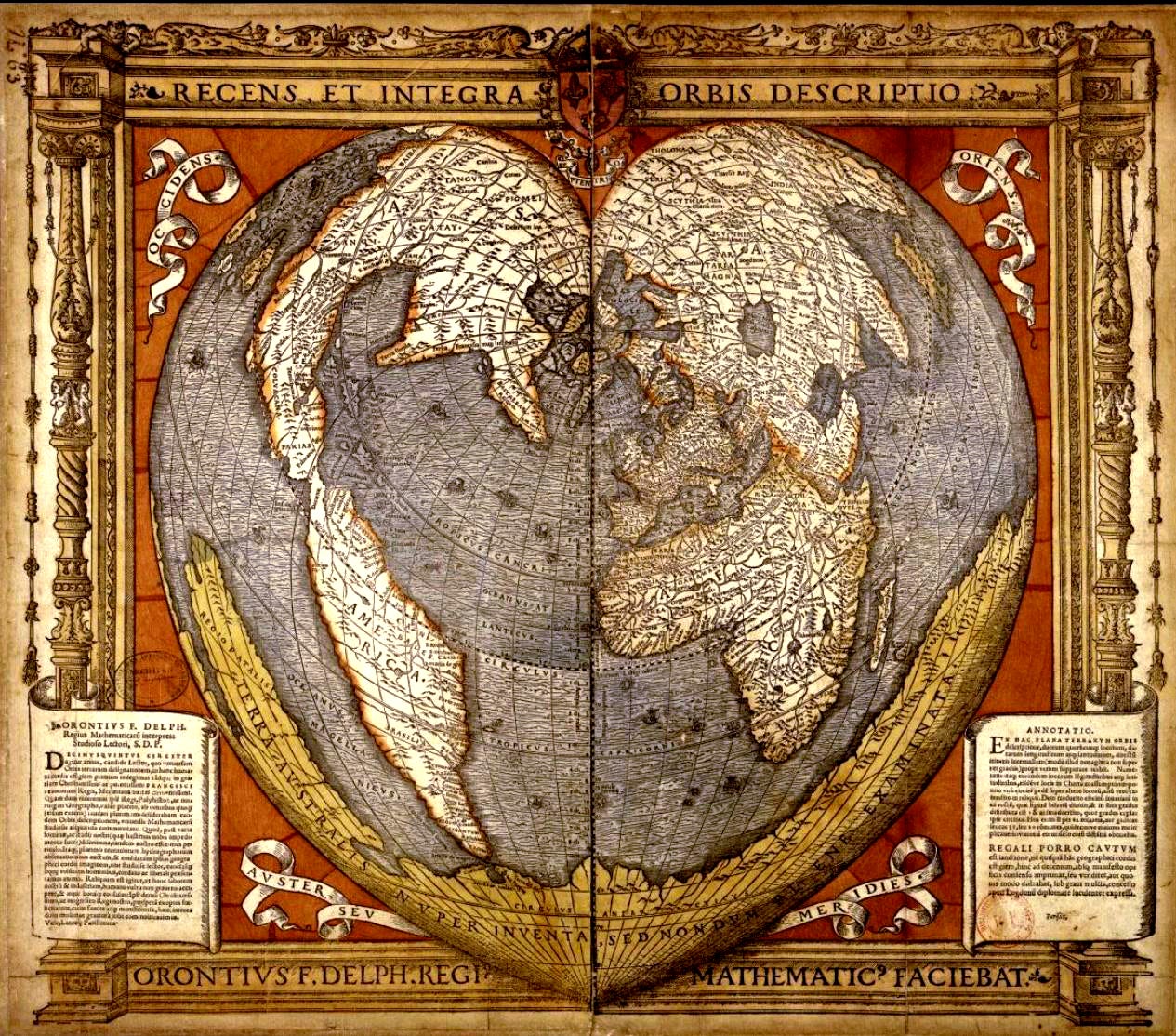
If you’re feeling minimalist, try a T and O map:
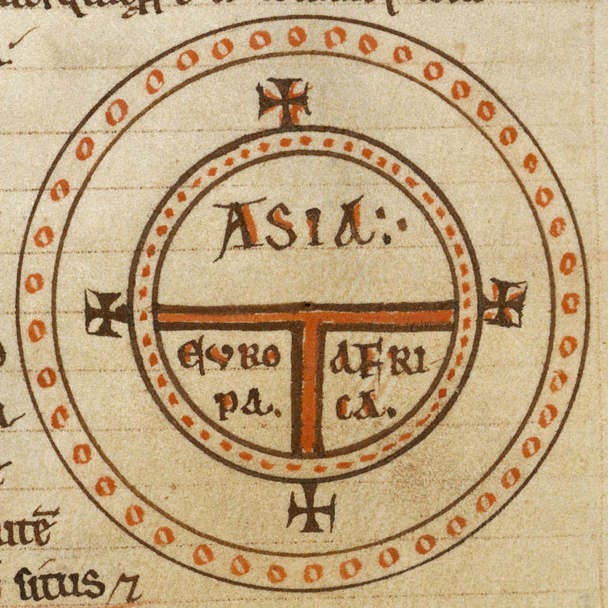
If you want to get revenge on Greenland for pretending to be as large as Africa, use a Gnomonic projection to make it smaller than actual size:
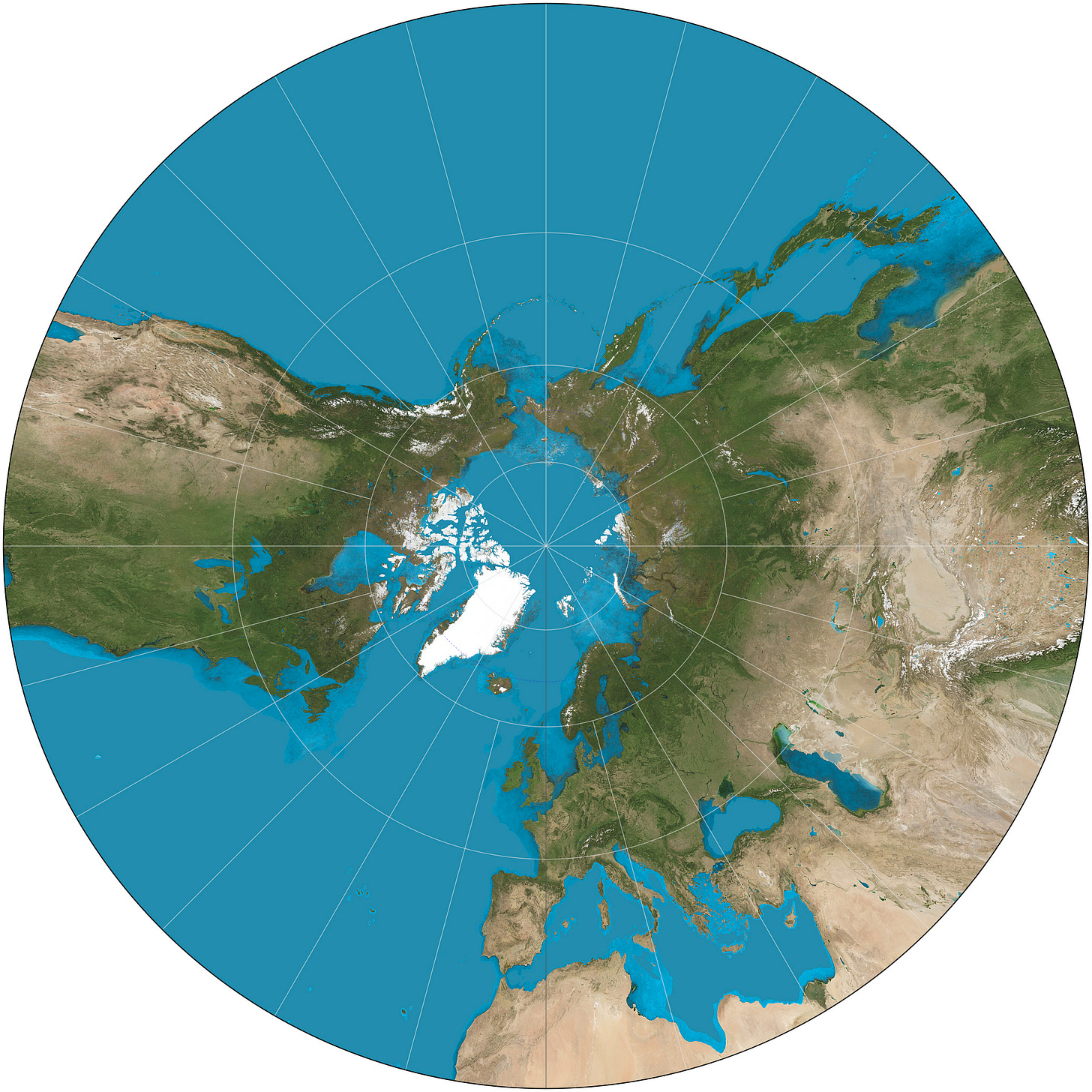
If you’re a fan of Central America and Southeast Asia, choose a transverse Mercator projection:

Do you want your map to tessellate? L. P. Lee has just the map:
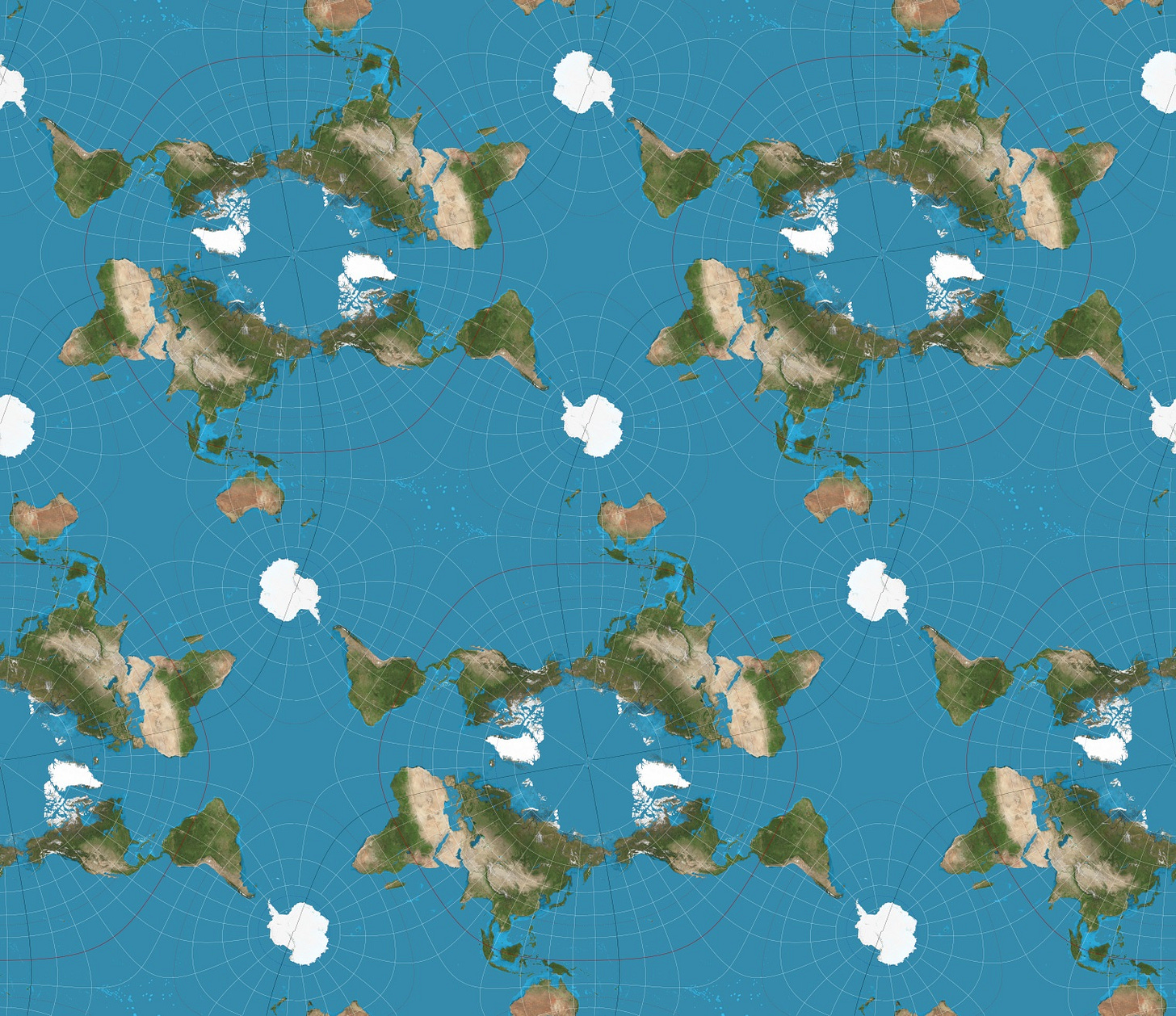
The Hammer retroazimuthal projection is, well, hard to describe:

And there’s more: Eckert II, Wagner VI, Kavrayskiy VII, …
Step 6: Get sick of looking at maps and just buy the first result for “equal-area map” on Amazon
Step 7: Admire my new map

Hmm, something about this map is unusual, but I just can’t figure out what.

Footnotes:
p. 149, Die Neue Kartographie/The new cartography. Cited in Robinson.


